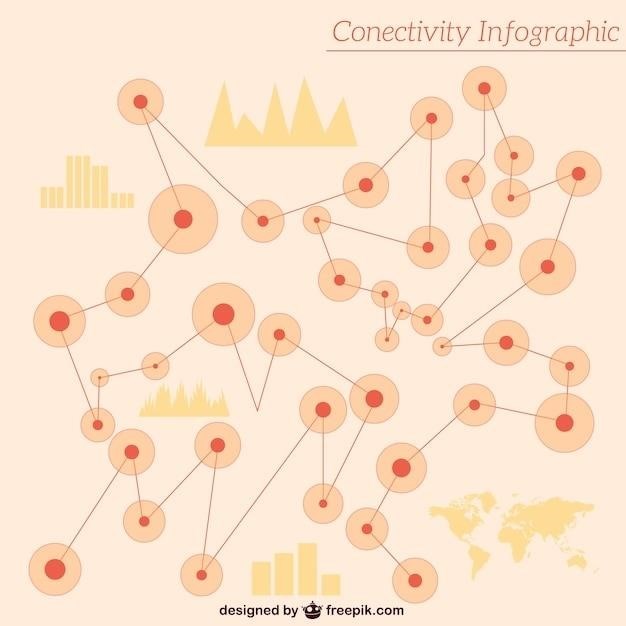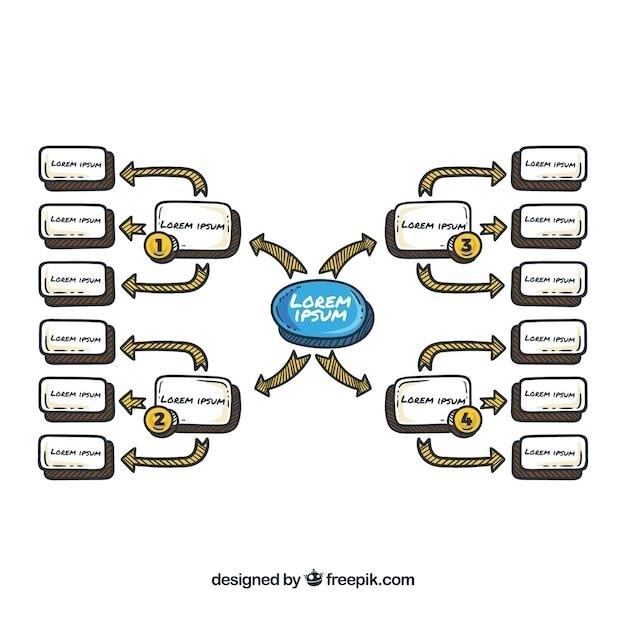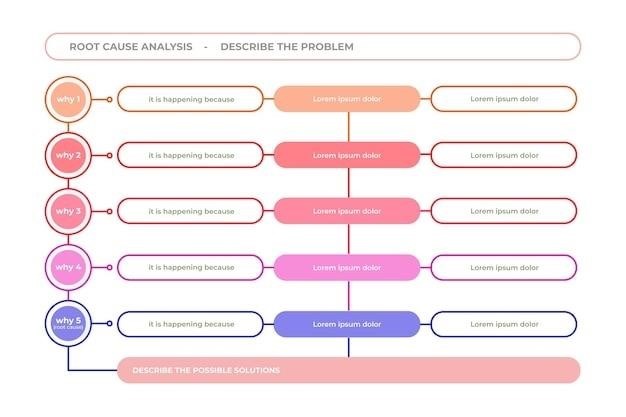UNF Thread Chart PDF⁚ A Comprehensive Guide
This comprehensive guide delves into the intricacies of UNF thread charts, providing a clear understanding of their purpose, structure, and applications. We’ll explore the characteristics of UNF threads, their various uses, and the key parameters within a UNF thread chart. We’ll also discuss the standards and specifications that govern UNF threads, ensuring accuracy and consistency in their use. Ultimately, this guide aims to empower you with the knowledge and resources needed to effectively utilize UNF thread charts for your projects.
Introduction to UNF Threads
UNF, which stands for Unified National Fine, represents a specific thread type within the Unified Thread Standard (UTS). This standard, overseen by ASME/ANSI in the United States, provides a unified system for screw threads, ensuring interchangeability and compatibility across various industries. UNF threads are characterized by their fine pitch, meaning they have a greater number of threads per inch compared to their coarse counterparts, UNC (Unified National Coarse) threads. This fine pitch offers several advantages, including⁚
- Increased Accuracy⁚ The finer pitch allows for more precise adjustments and tighter tolerances, making UNF threads ideal for applications requiring fine control and delicate assembly.
- Enhanced Strength⁚ The smaller helix angle of UNF threads results in a larger stress area, contributing to greater tensile and shear strength compared to UNC threads.
- Reduced Torque⁚ UNF threads require less torque to achieve the same bolt preload as UNC threads, minimizing the risk of overtightening and potential damage.
- Improved Resistance to Loosening⁚ The finer pitch reduces the tendency for threads to loosen under vibration or dynamic loads, enhancing the reliability of threaded connections.
UNF threads are widely employed in various applications where precision, strength, and resistance to loosening are crucial. They are commonly found in aerospace, automotive, manufacturing, and other industries requiring high-performance threaded fasteners.
UNF Thread Characteristics
UNF threads are defined by several key characteristics that distinguish them from other thread types and contribute to their unique properties. These characteristics are essential for understanding the behavior and applications of UNF threads⁚
- Thread Profile⁚ UNF threads conform to a 60-degree thread profile, consistent with the Unified Thread Standard. This standardized profile ensures compatibility and interchangeability with other UTS threads.
- Pitch⁚ UNF threads are characterized by their fine pitch, meaning they have a greater number of threads per inch compared to UNC threads. This fine pitch is the defining feature of UNF threads and contributes to their strength, precision, and resistance to loosening.
- Thread Class⁚ Like other UTS threads, UNF threads are classified into various thread classes, denoted by numbers like 1A, 2A, and 3A. These classes specify the tolerance limits for thread dimensions, ensuring compatibility and interchangeability between components.
- Thread Series⁚ UNF threads are part of the “Fine” series within the Unified Thread Standard. This series includes a range of thread sizes, each with a specific pitch, ensuring appropriate selection for different applications.

These characteristics collectively define the unique properties of UNF threads, making them suitable for applications requiring precision, strength, and resistance to loosening. Understanding these characteristics is crucial for selecting the appropriate UNF thread for a given application.
UNF Thread Applications
UNF threads find wide application across various industries due to their inherent strength, precision, and resistance to loosening. Their fine pitch and standardized profile make them suitable for a range of demanding applications, including⁚
- Machinery and Equipment⁚ UNF threads are commonly used in machinery and equipment where precision and reliability are paramount. They are ideal for applications involving high-stress components, such as bearings, shafts, and gears, ensuring secure and durable connections.
- Aerospace and Aviation⁚ The aerospace and aviation industries rely heavily on UNF threads due to their strength and resistance to vibration. Their ability to withstand extreme conditions makes them suitable for critical components like aircraft engines and landing gear.
- Automotive Industry⁚ UNF threads are widely used in the automotive industry for various components, including engine parts, suspension systems, and chassis components. Their strength and durability ensure reliable performance and safety.
- Electronics and Instrumentation⁚ UNF threads find applications in electronics and instrumentation, where precision and fine adjustment are crucial. They are used in components like connectors, sensors, and actuators, ensuring accurate and reliable connections.
The versatility of UNF threads extends beyond these industries, making them suitable for various other applications where strength, precision, and resistance to loosening are paramount. The widespread use of UNF threads highlights their importance in modern engineering and design.
UNF Thread Standards and Specifications
UNF threads adhere to a set of standardized specifications that ensure interchangeability and compatibility across various applications. The primary standard governing UNF threads is ANSI/ASME B1.1⁚2003, which defines the dimensions, tolerances, and other critical parameters for UNF threads. This standard ensures that UNF threads manufactured by different companies will fit together seamlessly, eliminating the risk of incompatibility.
The ANSI/ASME B1.1⁚2003 standard outlines specific parameters for UNF threads, including⁚
- Thread Diameter⁚ The standard specifies the nominal diameter of the UNF thread, measured across the crest of the thread. This diameter is typically expressed in inches.
- Thread Pitch⁚ The pitch of a UNF thread refers to the distance between adjacent thread crests. This parameter is crucial for determining the thread’s strength and the amount of torque required for tightening.
- Thread Angle⁚ UNF threads have a 60-degree thread angle, which is a standard for most inch-based threads.
- Thread Class⁚ UNF threads are classified into different classes based on their tolerances. Class 2A, for example, represents a loose fit, while Class 3A indicates a tighter fit, allowing for greater precision.
Adherence to these standards ensures that UNF threads meet the required specifications for strength, durability, and compatibility, making them suitable for a wide range of applications.
UNF Thread Chart⁚ Understanding the Data

A UNF thread chart is a valuable reference tool that provides a comprehensive overview of various UNF thread sizes and their corresponding specifications. These charts typically present data in a tabular format, making it easy to locate the desired thread size and extract essential information. The data presented in a UNF thread chart is essential for selecting the appropriate thread for specific applications, ensuring proper fit and functionality.
A typical UNF thread chart includes⁚
- Thread Size⁚ This is the most fundamental parameter, typically expressed as a fraction (e.g., 1/4 inch) or a decimal (e.g., 0.25 inch).
- Threads Per Inch (TPI)⁚ This value indicates the number of thread crests per inch of thread length. A higher TPI suggests a finer thread with a smaller pitch.
- Major Diameter⁚ This refers to the diameter of the thread measured across the crests.
- Minor Diameter⁚ The minor diameter is measured across the roots of the thread, providing insights into the thread’s strength and holding power.
- Pitch Diameter⁚ This parameter represents the average diameter of the thread, lying halfway between the major and minor diameters.
Understanding the data within a UNF thread chart is crucial for engineers, machinists, and anyone involved in selecting and using UNF threads. It allows for accurate thread selection, ensuring compatibility and proper performance within various applications.
UNF Thread Chart⁚ Key Parameters
UNF thread charts present crucial parameters that define the characteristics and suitability of UNF threads for specific applications. Understanding these parameters is essential for selecting the right thread size and ensuring proper functionality. The key parameters typically included in a UNF thread chart are⁚
- Major Diameter (D)⁚ This parameter represents the largest diameter of the thread, measured across the crests. It defines the overall size of the thread and is essential for selecting the appropriate tap and die sizes.
- Minor Diameter (d)⁚ The minor diameter is the smallest diameter of the thread, measured across the roots. It is crucial for determining the thread’s tensile strength and its resistance to shearing forces.
- Pitch (P)⁚ Pitch refers to the distance between two adjacent thread crests. It is inversely proportional to the number of threads per inch (TPI). A finer pitch (more threads per inch) generally results in a stronger and more precise thread.
- Threads Per Inch (TPI)⁚ This parameter indicates the number of thread crests per inch of thread length. It is essential for determining the thread’s pitch and its compatibility with other threaded components.
- Thread Class⁚ This parameter specifies the tolerance and fit characteristics of the thread. Common thread classes include 1A, 2A, and 3A, with 1A being the tightest fit and 3A being the loosest.
- Thread Series⁚ UNF threads are part of the Unified Thread Standard (UTS) and are classified into different series based on their pitch. The most common series include UNC (Unified National Coarse) and UNF (Unified National Fine).
These parameters provide a comprehensive understanding of UNF thread dimensions and their suitability for various applications. Using a UNF thread chart to carefully consider these parameters ensures proper selection, assembly, and functionality of threaded components.
UNF Thread Chart⁚ Usage and Applications
UNF threads, characterized by their fine pitch, offer numerous advantages over coarse threads in various applications. Their higher thread density provides greater holding power, tighter fits, and enhanced resistance to loosening under vibration. This makes them particularly suitable for applications where precision and reliability are paramount.
UNF threads find widespread use in industries like aerospace, automotive, and manufacturing, where component tolerances are tight, and vibration is a common concern. They are commonly found in⁚
- Precision Machining⁚ UNF threads are essential for precise machining operations, where tight tolerances and accurate alignment are critical. Their fine pitch allows for finer adjustments and minimizes potential for misalignment.
- High-Stress Applications⁚ UNF threads are favored in high-stress applications due to their greater tensile strength and resistance to shearing forces. This makes them suitable for securing critical components under heavy loads.
- Vibration-Prone Environments⁚ The tight fit and higher thread density of UNF threads make them ideal for vibration-prone environments. Their resistance to loosening under vibration ensures secure connections in demanding conditions.
- Aerospace Applications⁚ The reliability and precision of UNF threads are essential in aerospace applications, where safety and performance are paramount. They are used in critical components like aircraft engine parts and landing gear assemblies.
- Automotive Components⁚ UNF threads are commonly found in automotive components, such as engine mounts, suspension systems, and steering components. Their strength and resistance to loosening ensure secure and reliable operation.
UNF thread charts provide a valuable resource for engineers and technicians, enabling them to select the appropriate thread size for specific applications, ensuring optimal performance and reliability.
UNF Thread Chart⁚ Resources and Downloads
Finding reliable UNF thread chart resources is crucial for ensuring accuracy and consistency in your projects. A wide range of resources are available online and in print, providing comprehensive information on UNF thread specifications and applications.
Here are some key resources for accessing UNF thread charts⁚
- ANSI/ASME B1.1⁚2003⁚ This standard, widely recognized as the authoritative source for UNF thread specifications, provides detailed information on thread dimensions, tolerances, and other critical parameters. It’s essential for ensuring compliance and accurate thread selection.
- Engineering ToolBox⁚ This online resource offers a comprehensive UNF thread chart, alongside explanations of thread terminology, calculations, and applications. It’s a valuable tool for understanding UNF threads and selecting the right size for your project.
- Manufacturer Websites⁚ Many fastener manufacturers provide downloadable UNF thread charts on their websites. These charts often include specific details about their product lines, including material types, thread classes, and available sizes.
- Online Databases⁚ Numerous online databases, such as those maintained by engineering societies and standards organizations, offer searchable UNF thread chart information. These databases allow you to quickly find the specific thread data you need.
- Technical Publications⁚ Engineering and manufacturing journals often publish articles and technical guides that include UNF thread charts. These publications provide in-depth analysis and insights into UNF thread applications and best practices.
By utilizing these resources, you can easily access accurate and up-to-date UNF thread chart information, ensuring the success of your projects.
The Importance of UNF Thread Charts
UNF thread charts are indispensable tools for engineers, machinists, and anyone involved in projects that require accurate thread selection and application. They provide a comprehensive and standardized reference for understanding the characteristics and specifications of UNF threads, ensuring consistency and reliability in design and manufacturing.
By utilizing UNF thread charts, you can avoid costly errors and ensure the proper fit and function of threaded components. They offer a wealth of information, including thread dimensions, tolerances, and pitch, enabling you to select the correct thread for your specific application. This accuracy is crucial for maintaining structural integrity, preventing premature failure, and ensuring the long-term performance of your projects.
Furthermore, UNF thread charts serve as a common language in the engineering and manufacturing industries, promoting collaboration and standardization. They eliminate confusion and ensure that all parties involved in a project are working from the same set of specifications. This shared understanding is essential for efficient design, production, and assembly processes.
In conclusion, UNF thread charts are critical resources for anyone working with threaded components. They provide the information necessary for accurate selection, application, and communication, contributing to the success and reliability of your projects.
